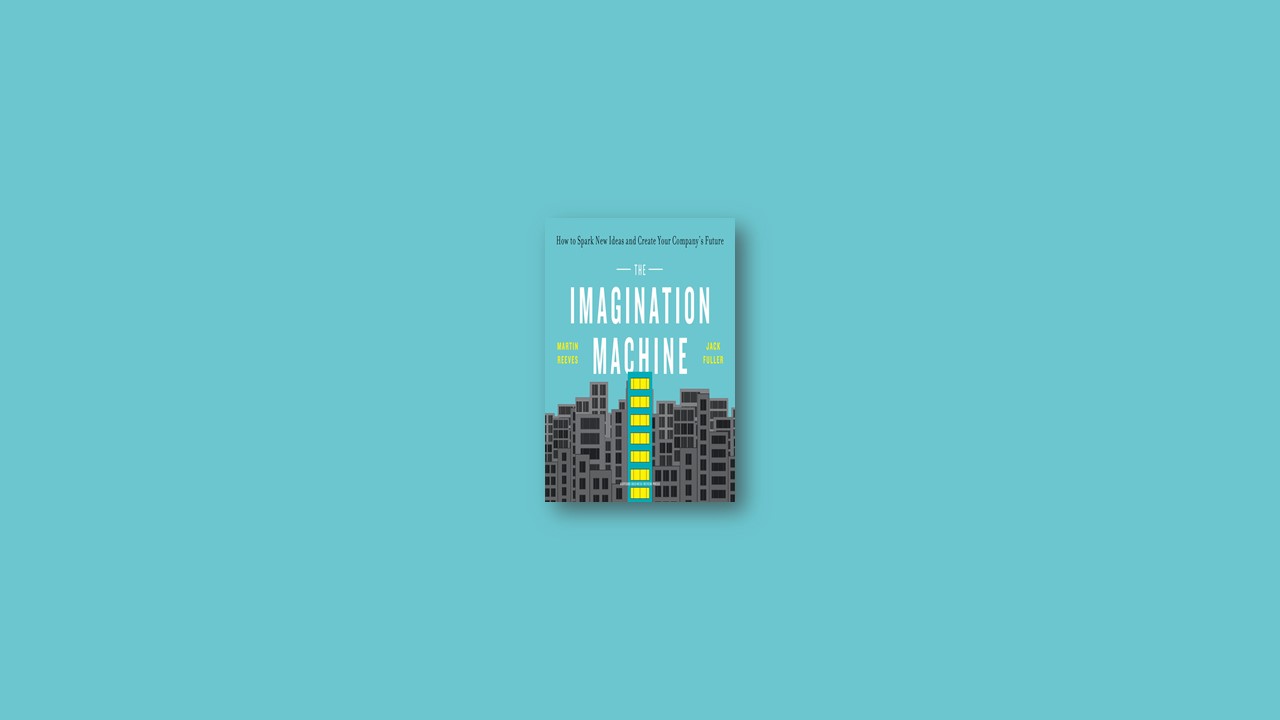Corporations have changed the world radically in so many areas: medicine, consumer goods, transport, finance, agriculture, entertainment, communications. And they’ve done so by combining organizational abilities with the unique human capacity to imagine: the ability to see and create things that had never existed.
Who in the 1500s would have thought it would be possible to manufacture so many shoes and distribute them around the world? Who would have thought that writing and staging plays would turn into the television and movie industries, with performers given the same status as the nobility in ancient Rome? Who would have thought that a few people and a team of machines could run farms the size of small countries? If we had never imagined, we would have never taken the steps that led us to these once unimagined realities.
This book is about the mind, but not only the mind. Harnessing imagination entails dealing with the mind, action, and their interaction. It is not only about individual creativity, but how minds can interact, creating collective imagination and momentum to turn ideas into new realities. And it is not only about product innovation; it is a book for business leaders who want to re-envision their entire enterprise and increase its imaginative potential.
What Is Imagination?
We can most clearly see what imagination is by comparing humans and other animals. An animal like a cow or a fish lives in the realm of what is. A goldfish works with just what is in front of it; it has no standpoint to reflect on its situation. It can’t create a mental model of a different, better kind of fish tank more aligned with its aspirations to flourish as a goldfish.
Humans, in contrast, can explore the realm of what is not. A hunter-gatherer could create a mental model of a better kind of basket or what the hunt might be like the following day. In business, we can consider what a company might be like if it were restructured or new products or services we could invent. This capacity to mentally explore the not-yet-existent allows us to deliberately create new things and shape the world around us.
We define imagination as “the ability to create a mental model of something that doesn’t exist yet.” This is also known as “counterfactual thinking”: the ability to create mental objects that are not merely representations of the outside world
In business, we spend much of our time in the realm of what is. We think factually, looking at data or a particular situation, trying to determine what is going on. This makes sense. Managing a business involves keeping a complicated effort going; many large businesses are bigger than most cities have been throughout human history. Walmart, for example, with its 2.2 million employees, is ten times the size of the great city of ancient Babylon. It makes sense that most of the time our minds are taken up with just keeping the machine running.
There are times, though, when we need to explore what is not, but could be. In crises like Covid-19, for example, we tend to be consumed with the question “What is happening to us?”—the factual question—to the exclusion of the imagination-provoking, counterfactual question “How can we create new options?”
When we think counterfactually, we put aside mental models we habitually rely on and create new ones. Haier, for example, now the largest appliance manufacturer in the world, transformed itself in the 1980s. At the time, the company was in crisis: the factory was run down and in debt. The new chairman, Zhang Ruimin, decided the company would have to move beyond making passable but lackluster refrigerators. He pulled seventy-six fridges off the production line—any that had even minor faults—and asked employees to smash them up.
It was a symbolic act to shift thinking from the factual to the counterfactual: What could we do if we got rid of the existing system? Without imagination, all you would be doing is destroying the current reality. A cow, for instance, could not understand the point of bulldozing a moderately useful barn, whereas this might prompt an imaginative human to start making a mental model of something that doesn’t exist yet.
Seduction
Small surprises happen all the time, like receiving an unexpected email. But the surprises relevant to imagination are the ones that seduce us away from routine thinking and lead us to rethink deeply and inventively. These are the anomalous, challenging, unfamiliar, even incomprehensible encounters that inspire imagination.
Three types of surprise can inspire imagination: accidents—events or consequences incidental or irrelevant to what we are trying to achieve; anomalies—parts of a situation, story, or dataset that are out of the ordinary; and analogies—parallels we see between concepts or experiences, which suggest new possibilities.
For surprises to impact us, however, our minds need to be prepared. Plenty of things pass us by, but we need to notice them (the cognitive aspect) and we need to care (the emotional aspect) to spark imagination. The more we commit to caring and noticing, the more we create the mental context for encountering imagination-provoking surprise.
There are two ways of caring: aggravations and aspirations. Aggravations or frustrations drive us to change or escape from something. Aspirations drive us to bring something we want or believe into being. These are important because our brains do not simply register any and all sense impressions. As neuroscientist Walter Freeman described, “the pattern generated by the cortex is not a ‘representation’ of the stimulus but … constitutes the significance and value of the stimulus for the animal.”
What impacts us is what matters to us. Aggravations and aspirations motivate and enable us to notice. We can notice things more or less deeply: seeing, comprehending, and interpreting. Each of these is associated with a pathology of not noticing, which we might recognize from business or our own lives: forms of obliviousness.
Seeing is taking in new information. If we don’t do this, we won’t encounter any kind of surprise. If we’re stuck doing only routine things every day, not having interesting conversations and not exposing ourselves to new social or geographical environments, we are stuck in “informational oblivion.”
Interpreting is connecting—noticing the ramifications of one piece of information for others. Think of the difference between you and a trained biologist walking through a forest. Where you see simply a leaf, they notice the early appearance of a rare tree at an unusual elevation, implying a changing climate, which has implications for the forest as a whole. Their biological worldview allows them to interpret more: to make more connections. If we can’t draw on a rich conceptual inner world, made of deep and varied worldviews, we are in “conceptual oblivion.”
When we care and notice, we get inspired more; we encounter surprises—accidents, anomalies, and analogies—that prompt us to reimagine.
The Idea
Every business model was once no more than a mental model. The fact that banks exist now shouldn’t make us forget that they are incidental creations, not inevitable. A bank is, at root, an idea, an imagined mental model, and it can be reimagined.
A key move, therefore, is to remember that our thoughts do not equal reality. The mental models we live by today are constructed. That means they are full of construction materials, to be dismantled, altered, and recombined.
Another key move to develop an idea is to remember that, other than a little time, playing with mental models costs nothing. Over your career, you’ve probably had a few fleeting thoughts that would have had huge implications, if pursued. “What if we sold off most of our business?” “What if we moved into a different industry?” “What if we completely rethought the service we provide?” Questions like these are easy to neglect because we fear they suggest complicated, expensive, and perhaps ultimately unwise paths of action.
Don’t confuse thinking and rearranging models—a costless exercise—with actually pursuing the changes. Thinking radically is a risk-free activity. We need to give ourselves a chance to construct an exciting alternative reality and discover and articulate its potential benefits before the anticipation of the costs of execution narrows our mind.
Susan Hakkarainen, chairman and CEO of Lutron Electronics, told how her executive team has a rule to first focus solely on the idea without considering how to implement it: A key principle for us is that we don’t think about how hard or easy something is, or how we’re going to end up doing it. We think first about what it is. You have to listen to the customer, put yourself in their shoes, listen to what they need, explore the solutions, even if they’ve never been done before—especially if they’ve never been done before. The only way to do this is to let yourself rethink, design, build, speculate, tinker, imagine what something could be. Don’t anticipate what reality is going to throw at you, how difficult it is going to be later. Especially early on in the process, you will probably be wrong anyway. You figure it out later.
Artificial Imagination
Can machines imagine? The way we normally think about computers is that they take instructions we give them, calculate, and produce a result. We don’t think of computers as having imagination as we have defined it: getting surprised, developing counterfactual models, and exploring the new possibilities. Yet Blaise Agüera y Arcas, distinguished scientist at Google AI, has pushed the boundaries of computation, creating algorithms that do surprisingly imaginative things.
Agüera y Arcas and his team trained an algorithm to recognize birds and then prompted it to create new pictures based on its understanding of birds. When we interviewed him, we asked how this relates to imagination. As he put it, the AI is exploring a “manifold”: the space of all possible things that we might still call a bird, similar to how imagination explores nonabsurd counterfactual possibilities. “These neural nets are finding manifolds of stuff they have been trained on, and they can wander through that manifold and generate plausible things.”
Such recent developments in AI, which appear to be encroaching on territory we have described as imagination, raise the question of whether the model of human imagination underpinning this book is but a temporary one—whether computers will eventually substitute for humans in the realm of imagination too.
However, computers are still far from possessing certain capacities that are fundamental to imagination. AI also lacks another fundamental part of imagination: a motive to imagine. The motive is not just the impetus for starting the process, it is a guide for what a particular imaginative process should be about—what is important to rethink.
What we have seen, however, is that the products of AI can be valuable in generating grist for thought; humans can develop machine outputs into a usable result. This suggests a different perspective, which Agüera y Arcas of Google emphasized to us: “You have to problematize the idea that AI is separate from humanity. If you zoom out and look at the bigger socio-technical system, AI is just another human expression. It’s part of this whole, giant machine, made up of humans combined with everything they have invented.”
Rather than whether we will be replaced, then, the more relevant question perhaps is how this colossal collaboration will evolve. What are the ways AI might work with us and enhance our imaginative capability?


